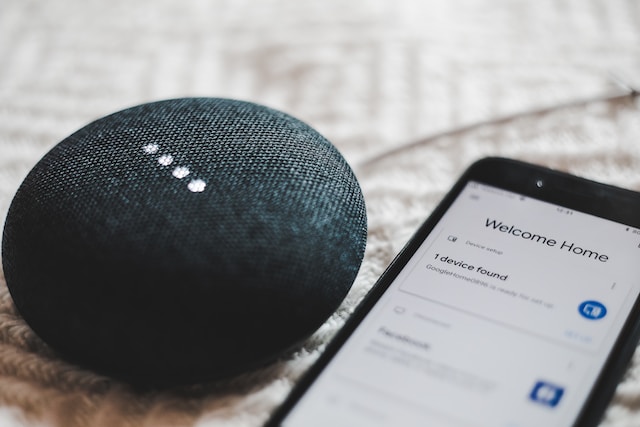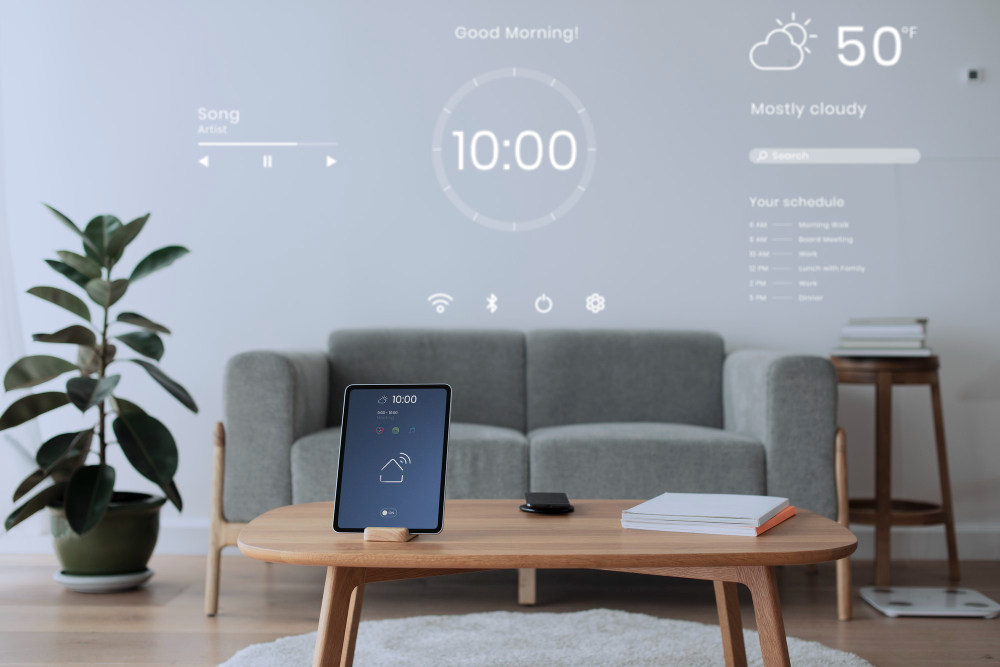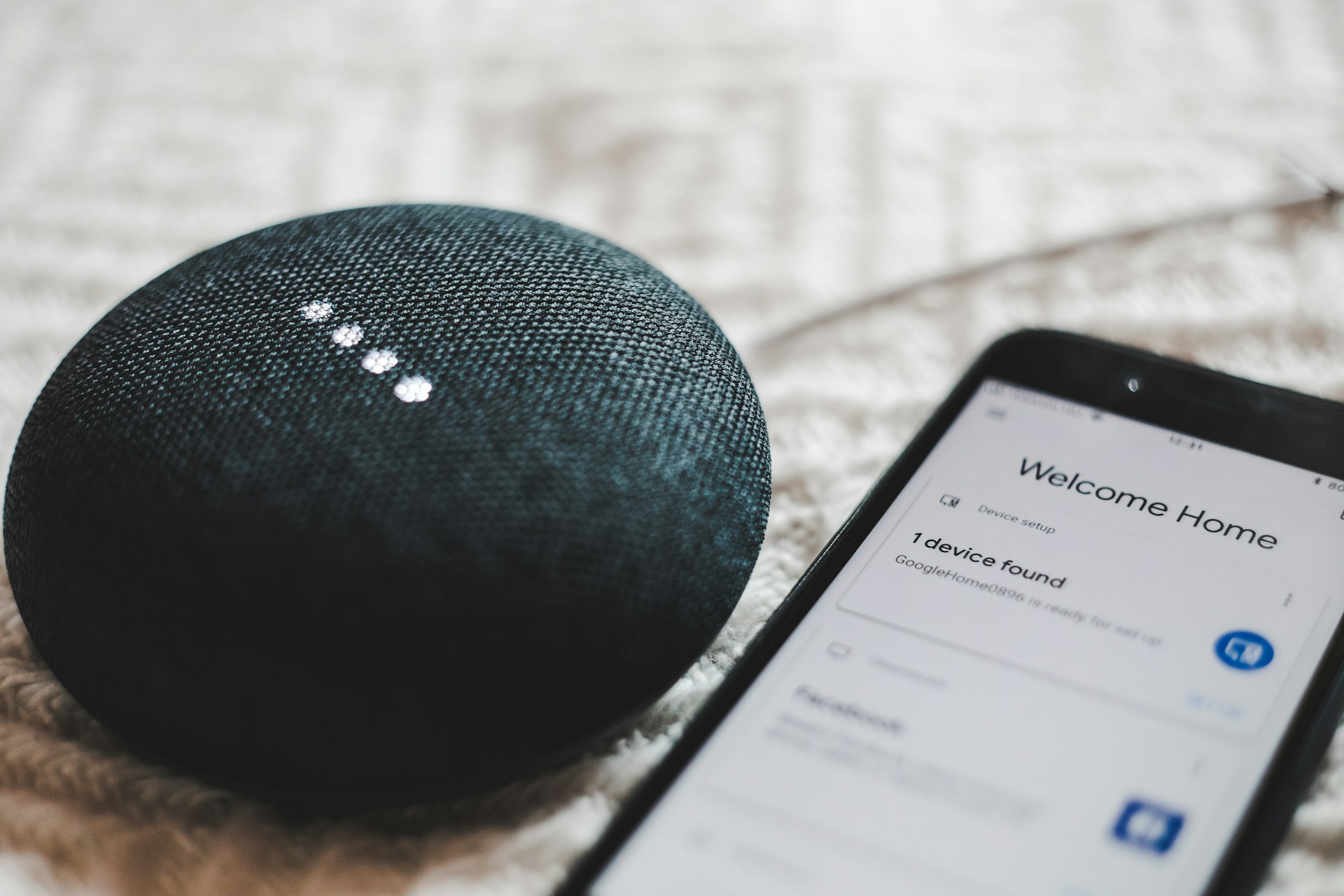The home automation revolution has begun! Using the internet and smart devices, we can engage with our living spaces in ways that provide convenience, security, and energy efficiency in the present and into the future. Whether you consider yourself a revolutionary or you aren’t sure the revolution is for you, read on to learn more about home automation and explore its functionality, benefits, and warranty considerations. This way, you can make informed decisions about home automation systems and their associated warranties for your long-term protection and peace of mind.
Understanding home automation
Home automation is a way to control the electronic devices connected to the internet in your home, allowing them to be managed automatically. These smart devices can be connected to one another, allowing them to trigger each other so you don’t have to use a voice assistant or an application. Home automation allows you to do things like set your air conditioner to come on an hour before you get home so your place is cool and comfortable when you get there. Not only is this type of automation convenient, but it can save you money on heating, cooling, and electrical bills.
How home automation works
Let’s delve a little deeper into how home automation works.
Overview of home automation systems
Home automation is a network of hardware, communication, and electronic interfaces that integrate everyday devices with one another over the Internet. Each device has sensors and is connected through Wi-Fi, allowing you to manage them from your smartphone or tablet whether you’re at home or miles away.
Central control hub: the brain of your smart home
As you add smart home devices to your home, you’ll want to also add a smart home hub. A smart home hub acts as a centralized spot from which you can control your various devices. More importantly, a smart home hub lets you connect all the smart home devices together. For instance, a smart home hub can tell your lights to turn off and your thermostat to go into eco mode.
Communication protocols: connecting devices seamlessly
Home automation systems use various communication protocols, such as Zigbee, Z-Wave, or Wi-Fi, to ensure seamless communication among smart devices. These communication protocols allow devices to share information and respond to commands from the central control hub or other connected devices. This way, you get the overall efficiency and performance you want from your smart home system.
Integration of sensors and actuators
Sensors and actuators are the technology that enables specific actions by your home system. A sensor – such as a motion sensor – gathers data about the environment and sends it to the actuator, which carries out a task. In the motion sensor example, the actuator would turn on the lights when the motion sensors detect someone has entered a room.
User interface: controlling your smart home
Your user interface is where you can review and adjust the tasks controlled by the hub. Basically, this is where you connect with your system. Your user interface could be a voice assistant like Amazon’s Alexa or Google Assistant, or it could be a control panel. Your user interface should be user-friendly and intuitive so you can easily check out real-time information and create or adjust your automated routines.
Advantages of home automation

There are many advantages to automating your home, including the following:
- Increased safety and security: Home automation takes the functionality of your a step further by letting you create a chain reaction from one single event. Let’s say someone walks up to your porch, triggering the doorbell camera’s motion detector. With a smart home security system, the doorbell camera records the visitor and triggers the lights in the hallway and living room to turn on, giving the impression you’re home. You can even have a smart speaker start playing the sound of dogs barking.
- Enhanced convenience: Home automation devices can be controlled by your smartphone, which means you can adjust the system from anywhere.
- Data and control: Smart home products connect to smartphone apps, so you usually have in-depth reports and controls at your fingertips. For example, you can get notifications whenever someone manually adjusts the thermostat. Or, by giving each household member their own smart lock PIN, you can get notifications when your children get home from school. You can also see how your energy consumption changes over time through a smart thermostat or view changes in indoor air quality with a smart air purifier.
- Improved energy efficiency: Smart gadgets support green living. They save energy by turning on and off at scheduled times or in response to environmental factors, cutting utility costs over time. For example, one of the ways smart thermostats work is through an occupancy sensor. If the thermostat senses you’re not home – or not in a specific room or zone – it goes into energy-saving mode.
- Simplified home maintenance: Home automation systems can monitor the health of various devices and provide maintenance reminders. This proactive approach may extend the lifespan of appliances and reduce the likelihood of unexpected breakdowns.
- Personalized user experience: Modern home automation systems are designed to adapt to individual preferences and habits. As users interact with smart devices, the system learns their routines and adjusts settings accordingly, creating a personalized and comfortable living environment.
Choosing the right home automation devices
Building a smart home system that fits your lifestyle requires choosing the right home automation devices for you. Considering the following factors and taking appropriate steps will help you choose the devices you need to make your home a more convenient, secure, and efficient space to live in:
Identify your needs: The first thing to do is determine your priorities. What is most important to you? Security? Green living? A lower energy bill? Assess your specific needs to determine which aspects of your home life you want to automate.
Compatibility with home ecosystem: What do you currently have at home? Take stock of your current ecosystem to be sure the home automation system you put in place is compatible with what you already have.
Device functionality: Next, you can have some fun exploring the market. Find out what’s available, from smart lighting and thermostats to smart locks and surveillance cameras. Figure out which devices match your priorities and current equipment, then explore the functionality of available home automation devices.
Scalability and expandability: Think about your future needs. Are you in your forever home? Are you planning a family or expanding your family? Are you getting ready for retirement and doing all the tasks you’ve been putting off? As you evolve, your home needs will evolve as well, so choose devices that allow for scalability or expansion.
User-friendly interface: Look for devices with user-friendly interfaces and intuitive apps. Your setup and monitoring should make managing your smart home a breeze.
Security features: Anything that operates over the internet has the potential to be hacked. The devices you choose need to have robust security features. Your home automation system should protect your privacy and data through encryption and reliable security protocols.
Energy efficiency: Reduce your carbon footprint and save on utility bills by selecting energy-efficient devices. Look for devices with ENERGY STAR certifications and energy-saving or eco modes.
Budget considerations: Make financially sound decisions when embarking on this transformation. Some devices are more expensive but offer long-term savings and other benefits. Set a budget for your home automation and select devices within your financial constraints.
Customer reviews and ratings: There’s a wealth of information in customer reviews and ratings. Some functionality may not work as described, or there may be unintended consequences you haven’t thought about. Reading customer reviews and ratings gives you real-world insights into the performance and reliability of the devices you’re considering.
Warranty and customer support: Be sure your products have good warranties and customer support. This is another area in which customer feedback can be very helpful. A reliable warranty provides peace of mind, and responsive customer support can be crucial in case of technical issues.
Home aesthetics: If you want your devices to blend in with your home’s interior and complement your decor, consider the design and appearance of the devices and choose the ones you find aesthetically pleasing.
Testing compatibility: Find out if you can test the devices in-store to ensure they’re compatible with your home and lifestyle. Check the return policy, especially if it’s a more costly device, to be sure you can return the item if it doesn’t fit in.
Curate a collection of home automation devices to enhance your living experience, offer convenience, and contribute to a more efficient and secure home by carefully considering these factors and making informed decisions. This isn’t the place to make impulse buys, so take the time you need to research and compare various options, ensuring the devices you choose align with your vision for a smart and connected home.

Here are the most common home automation tools:
- Control and voice assistants: Voice assistants like Alexa and Google Assistant allow you to control devices through voice commands. Smart speakers are the tool through which you speak to your voice assistant.
- Climate and energy management: Climate and energy management devices allow you to control the comfort and power settings in your home. Unlike traditional thermostats, smart thermostats let you control your home’s temperature from anywhere. Some smart thermostats use occupancy sensors to determine if you’re at home or away to automatically change the temperature for you, while others switch between home and away modes based on your phone’s location. Smart air conditioners do the same thing for your cooling system.
- Lighting and power control: Smart lights are lighting fixtures and light bulbs that can sense and interact automatically with their environments and with users and other smart devices. Unlike regular light bulbs, which require manual operation, smart lights can be controlled remotely or through voice commands.
- Security and surveillance: A smart security system seamlessly integrates your home security system into your everyday life. It connects your security with your personal devices – such as smartphones – using home networks and wireless technology. A smart lock lets users leave their house keys behind, locking and unlocking doors with the tap of a finger or a simple voice command. A smart camera is a self-contained, standalone vision system with a built-in image sensor in the housing of an industrial video camera. A smart doorbell notifies your smartphone or hub when a visitor arrives at the door. Smart smoke or carbon monoxide detectors alert you if there’s a fire or gas detected and allow you to receive alerts when you’re not home. A smart home security system is a group of physical electronic components that all work together to protect your home. Smart systems allow control and automation through an app.
- Window coverings: Window coverings like blinds, shades, and shutters allow homeowners to control how much light comes into a space. They also provide security by obscuring what’s on the home side of the window they’re covering. Smart blinds and shades allow for this control to be automated – for example, shades can automatically close at sunset.
- Kitchen appliances: Kitchen appliances store, cook, and heat food and drinks. Smart appliances can do more. For example, smart refrigerators allow you to see if you have milk in the fridge while you’re at the grocery store. Smart ovens and cooktops let you remotely set the oven temperature, select settings and monitor cooking progress. Smart dishwashers with Wi-Fi connectivity allow monitoring. Smart coffee makers provide the flexibility to start and choose brew strength remotely. Smart vacuum sealers can also be operated wirelessly.
- Cleaning and maintenance: Cleaning and maintaining your home is the process by which you keep everything in good shape. Smart robot vacuum cleaners can be set remotely to vacuum whenever you please, making your home cleaning routine that much easier.
- Water and environmental management: Your home uses water for a variety of purposes, including dishwashers, clothes washers, showers, sinks, and more. A smart water heater allows you to analyze household behavior patterns, track usage, and predict usage accordingly. A smart water heater prevents unnecessary water and energy waste through remote monitoring and usage control. A smart water softener uses a sensor to automatically adjust to changes in your water’s hardness level and regenerate – or flush the minerals left behind during the softening cycle – only when necessary.
Integrating home automation into daily life
Automating your home adds convenience and efficiency to your daily life. It lets you preheat your oven on your way home from work so you can get dinner on the table 30 minutes earlier. You can check the fridge to see if you need to stop and grab anything on your way home. It can set your home temperature to be exactly the way you like it when you arrive.

Home automation offers convenience, energy savings, security, and so much more. How far you take it is up to you. That’s the beauty of an automated home system – you can start with a few light bulbs and go as big as you want, depending on your needs and priorities. The central idea behind automation is to give you the home you want at your fingertips.




